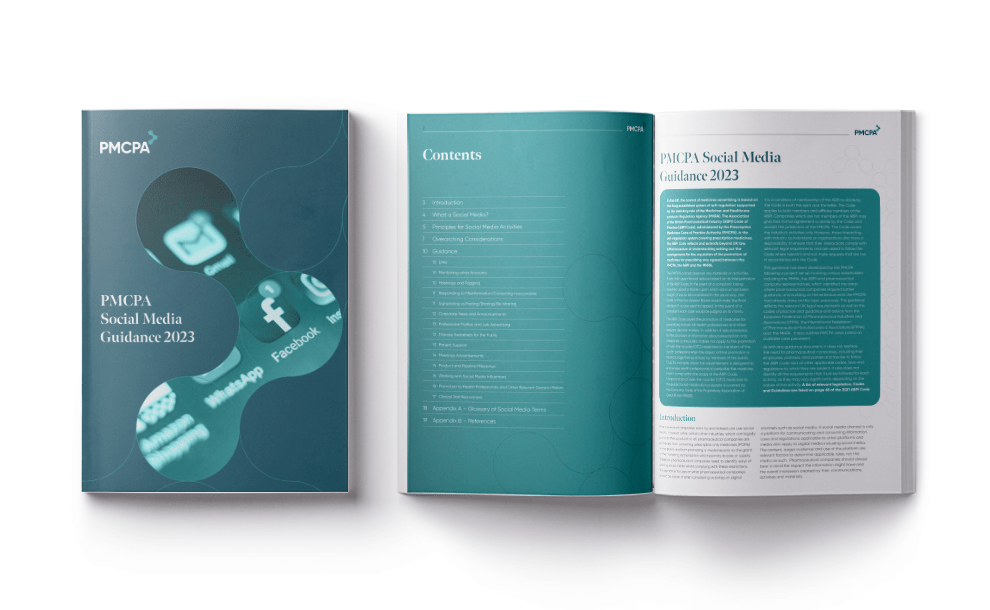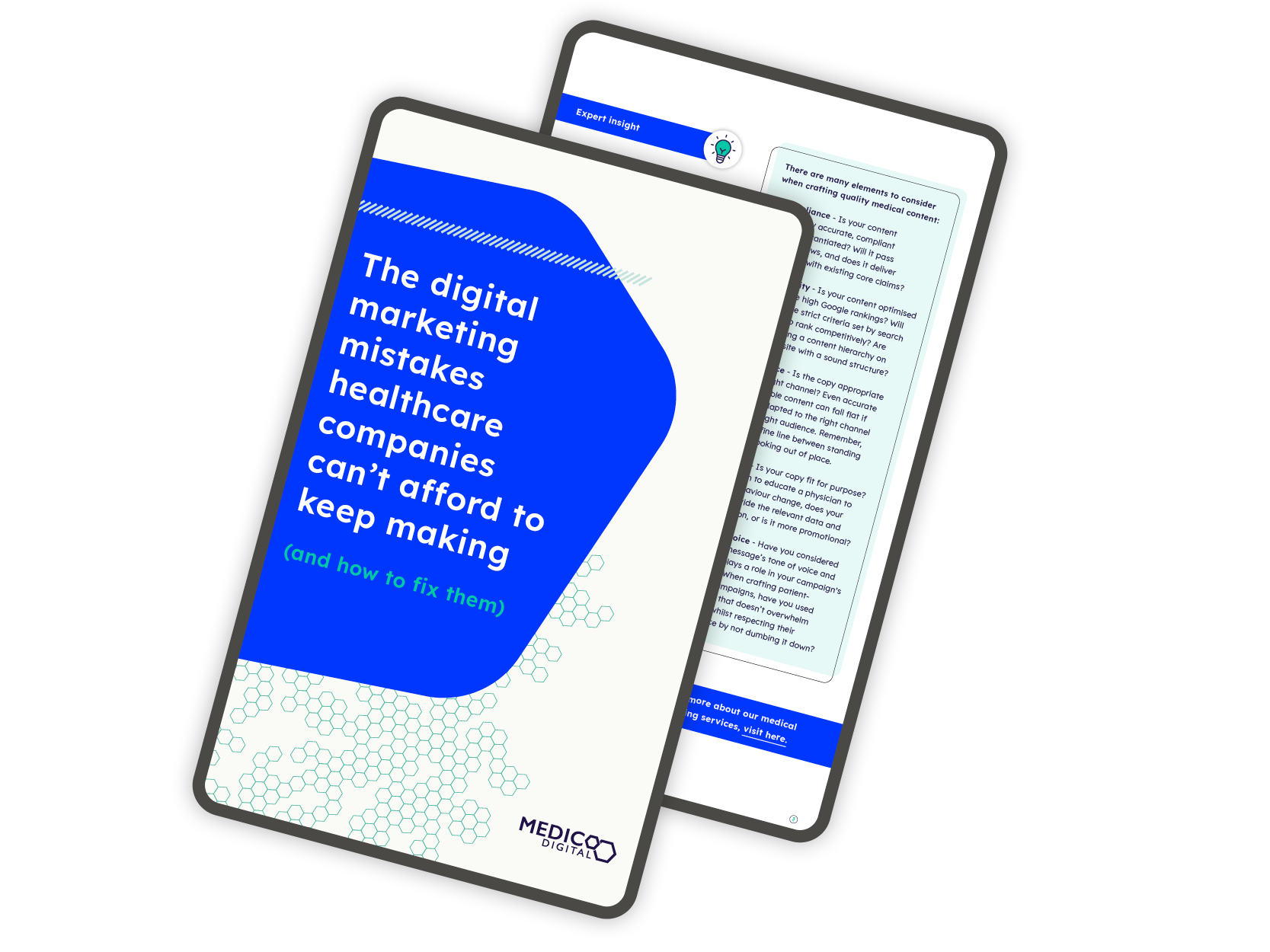As a digital marketer in the healthcare sector, you have the tricky task of staying abreast of the latest digital trends, whilst at the same time ensuring that your marketing is compliant with all the relevant regulatory guidelines. That includes those regulations that apply to the protection of consumer privacy rights, such as GDPR, and those that govern the advertising and promotion of medicines and medical devices. In this post, we’re going to take a look at the European Union Medical Device Regulation (EU MDR), a new set of laws that govern the production, manufacture and distribution of medical devices in EU member states.
The EU MDR came into law on May 26, 2021, and MedTech companies must comply with the new regulations if they want to retain their CE mark and sell their medical devices in Europe. The EU MDR governs the entire lifecycle of a medical device, including sales, distribution and promotion. It’s your role as a marketer to ensure that your digital marketing complies with this regulation.
Why is the EU MDR so important?
There are over 500,000 types of medical devices and In Vitro Diagnostic medical devices (IVDs), including plasters, X-ray machines, pacemakers, healthcare software apps, pregnancy tests and diabetic blood sugar monitoring devices. The EU MDR replaces the outdated EU Medical Device Directive (MDD) from 1992. Whereas the old MDD focused on how companies got their products to market by obtaining their CE mark, the new EU MDR takes a more holistic look at the entire product lifecycle of a medical device.
The strategic and logistic importance of the new EU MDR cannot be overstated for MedTech companies, which must ensure that all new and existing products are compliant with the new regulations no later than May 25, 2024.
Furthermore, the EU MDR has mandated the inclusion of many products that were not previously covered by the MDD. Newly classified medical devices include products or substances used in the body either cosmetically or surgically, including:
- Contact lenses and other products put in the eye (eye drops)
- Facial fillers
- Breast implants.
For those companies subjected to medical device compliance for the first time, there is likely to be a steep learning curve.
It’s also important to first note that although compliance with the EU MDR is binding, the rules and regulations do not supersede an individual country’s national regulations on the promotion and advertising of medical devices. Rather, you must follow both the EU MDR and the individual country regulations when marketing a device in an EU member state. As you might have guessed, the UK is not covered by the EU MDR. The rather complicated landscape of medical device advertising is set out in the Blue Guide of the Medicines & Healthcare products Regulatory Agency (MHRA) and more specific advertising guidelines can be found in Section 12 of the Advertising Standards Association (ASA).
So what do you as a marketer need to be aware of?
What is a device’s intended purpose and why is it so important?
Whether you are marketing a medical device directly to consumers or those only intended for HCP use, the most important thing you need to be aware of is the device’s intended purpose. Article 2 (12) of the EU MDR defines the intended purpose as:
“…the use for which a device is intended according to the data supplied by the manufacturer on the label, in the instructions for use or in promotional or sales materials or statements and as specified by the manufacturer in the clinical evaluation” (emphasis added).
The intended purpose, as defined by an appropriate medical professional, must be adhered to throughout its product lifecycle.
For marketers, the intended purpose is the foundation of what you can and cannot say in your sales and marketing material. The EU MDR doesn’t lay out any specifics for sales and promotion – you’ll have to look to the individual country laws of your targeted demographic for that – but it does touch upon the critical importance of not misleading the patient or HCP in Article 7:
“In the labelling, instructions for use, making available, putting into service and advertising of devices, it shall be prohibited to use text, names, trademarks, pictures and figurative or other signs that may mislead the user or the patient with regard to the device’s intended purpose, safety and performance by:
- ascribing functions and properties to the device which the device does not have;
- creating a false impression regarding treatment or diagnosis, functions or properties which the device does not have;
- failing to inform the user or the patient of a likely risk associated with the use of the device in line with its intended purpose;
- suggesting uses for the device other than those stated to form part of the intended purpose for which the conformity assessment was carried out”.
So, the overarching takeaways for digital marketers to note from the EU MDR centre around the following two principles:
- You must always refer to the device’s intended purpose when crafting your marketing messaging.
- You must ensure that your sales and promotional material do not mislead the end-user in any way through the use of text, images, charts, data or trademarks.
Frequently asked questions about the promotion and sales of medical devices
As previously mentioned, the EU MDR takes a very headline view of marketing and promotion of medical devices. Compliance focuses on adhering to the device’s intended purpose in your messaging but does not reference any specific guidance about digital marketing, social media promotion or any other paid advertising. You must consult a country’s individual regulations on advertising and promotion of MedTech devices to find out these specifics. Here are some common questions and broad guidance about advertising medical devices in the EU.
Are there any differences between marketing directly to patients or to HCPs?
The EU MDR does not make any distinction in the promotion of medical devices for patients or end consumers versus HCPs. However, at the individual country level, stricter rules often apply when marketing directly to patients. It’s common that ads should not be aimed at children and that adverts must be marked as such. Many countries further stipulate that devices only authorised for use by HCPs cannot be advertised directly to end-users and must be hosted on password-protected sites or places otherwise inaccessible to potential patients.
Can you market a medical device on social media?
Again, there is no specific mention of specific digital channels in the EU MDR. So yes, you can advertise a medical device on social media as long as it adheres to the device’s intended purpose. It is critical that you understand your target countries’ rules and regulations, however.
In some countries, social media promotion is broadly permitted; in others, it is permitted but only with restricted social features like moderation of comments and deactivation of likes. Some countries such as Italy and Spain, require that you get approval from official health authorities or internet oversight bodies prior to posting.
In addition to these country-specific regulations, there are also restrictions put into place by some social platforms. LinkedIn’s advertising policy, for example, doesn’t allow ads for medical devices for home or consumer use.
Can you do comparative medical device advertising?
The EU MDR mandates that advertisements cannot be misleading in any way. So although you can compare devices in your digital marketing, the intended purposes of the compared devices need to be similar. Furthermore, the ad must not discredit competitors or create any confusion about competitor trademarks or trade names. At the individual country level, comparative advertising is broadly permitted but you should carefully consult individual guidelines to ensure your chosen brands are equivalent in terms of price, clinical data, market share, etc.
Compliance can be challenging – we’re here to help
Although the basics of the EU MDR are clear, adhering to individual country regulations and individual platform guidelines for your campaigns can quickly get complicated, especially if you want to target multiple locations. At the highest level of EU MDR compliance, you must be aware of your device’s intended purpose and make sure your campaigns are not misleading in any way, whether that’s through the use of text, image, trademarks or supporting data/graphics. Whilst this is a good blueprint for any marketing campaign, you’ll also need to consult the specific rules and regulations for each of your targeted geographical regions. That’s where the help of a specialist healthcare marketing agency can be particularly helpful. Medico has proven experience working with MedTech companies to design compliant yet impactful digital marketing campaigns with measurable results. We’d love to hear from you.




 Download for FREE
Download for FREE 